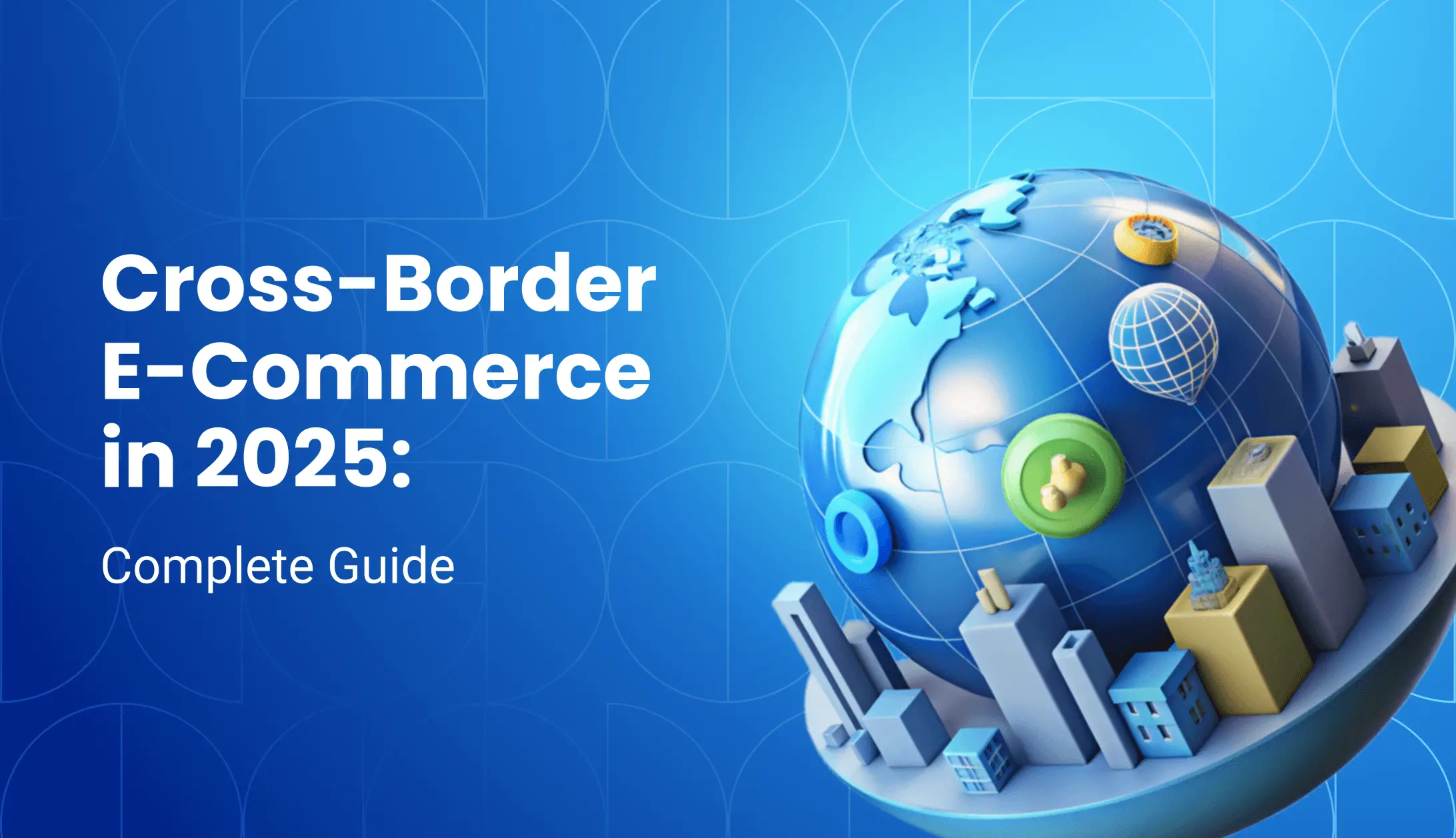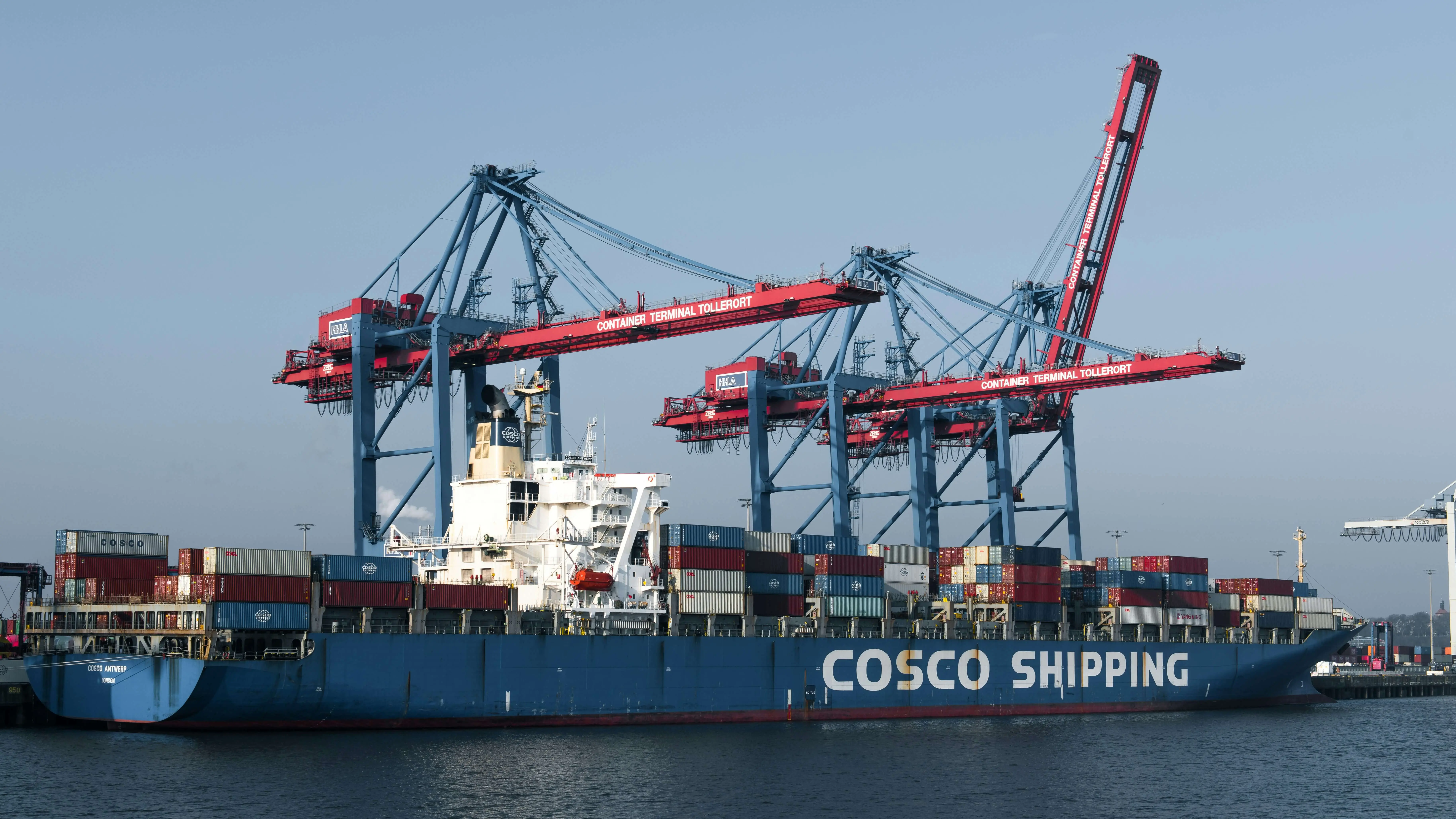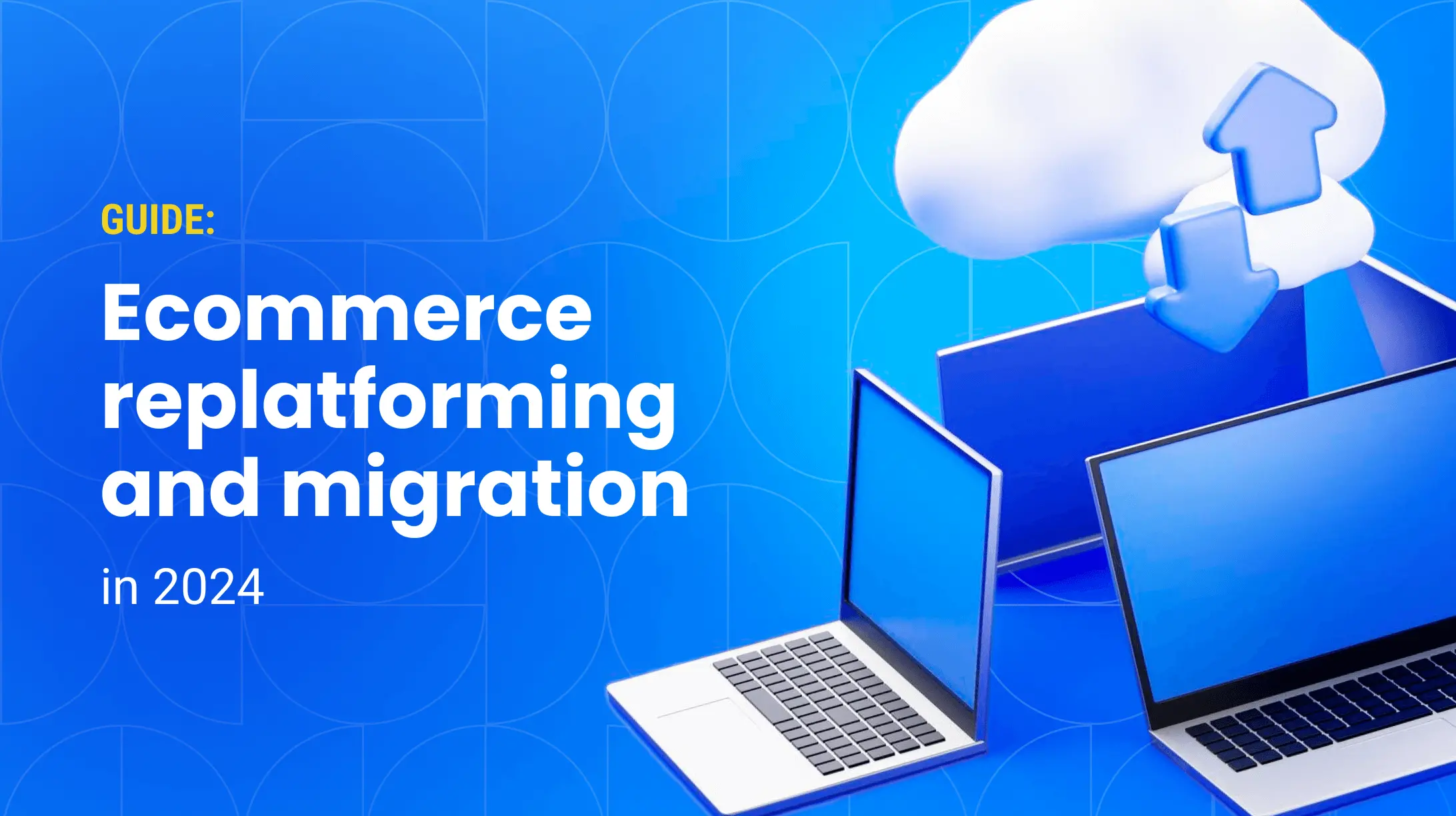0%

In This Article:
According to the latest data, the cross-border e-commerce consumer market is valued at $2.499 trillion. The booming growth of cross-border e-commerce presents immense opportunities for businesses to expand their reach and increase revenue.
However, many face significant hurdles. Navigating regulations, consumer preferences, and logistics, while addressing cultural differences, is extremely complicated, yet important for entering an international market.
This article will explore the current state of global e-commerce and its future trends, offering actionable strategies to help you navigate these challenges and achieve success in the global marketplace.
What is Cross-Border E-commerce?
Cross-border e-commerce involves online trade activities where consumers purchase goods or services from businesses located in different countries. It allows businesses to expand their market reach beyond domestic borders and tap into international customer bases.
Here are some key facts about cross-border e-commerce:
- Global Reach – Enables businesses to access consumers worldwide, expanding market potential.
- Diverse Markets – Involves understanding and catering to various cultural, regulatory, and logistical challenges.
- Technological Integration – Utilizes advanced technologies and cross-border e-commerce solutions for secure transactions and efficient global logistics.
- Consumer Trends – Drives demand, increasing preference for unique products not available locally.

5 Key Benefits of Cross-Border E-Commerce
A solid cross-border e-commerce strategy helps your business grow and succeed by tapping into international markets. Let's take a look at the key advantages:
Expanded Market Reach
By entering cross-border e-commerce, you access a vast international audience, expanding your potential customer base exponentially. This diversification reduces reliance on domestic sales and lets you adapt more easily to global market trends, boosting your business’s overall growth.
Revenue Growth
Venturing into international markets offers you the chance to increase online sales by reaching new consumer segments. Tailor your products to meet diverse needs, driving up sales volume. Tap into regions with higher purchasing power to enhance your profit margins, strengthening your financial standing.
Enhanced Brand Recognition
As you establish your presence across international markets, your brand becomes more recognizable and trusted globally. This increased visibility fosters customer loyalty and can lead to collaborations and partnerships, elevating your brand’s reputation and trustworthiness worldwide.
Competitive Edge
Cross-border trade enables you to stay ahead by catering to international consumer demands and leveraging global trends. Offer products or services that appeal to a wide range of markets, differentiating you from domestic competitors and positioning your business as an innovative industry leader.
Product Diversity
Engage in cross-border e-commerce to offer unique products to international consumers, tapping into niche markets. Attract customers seeking exclusive items, boosting sales and helping your business stand out by providing products unavailable locally.
6 Steps to Start a Cross-Border E-commerce Business
To create a cross-border e-commerce platform, you need a well-planned international strategy. Here’s how you can begin:
1. Conduct Market Research
Determine which countries offer the best opportunities for your products by analyzing economic conditions and consumer segments. Understand their consumer behavior, preferences, and purchasing power. Conduct surveys and focus groups for deeper insights. Study competitors to identify gaps you can fill and analyze market trends to spot growth opportunities.
2. Ensure Regulatory Compliance
Familiarize yourself with the import/export regulations, duties, and taxes in your target markets to avoid legal issues with international trade. Ensure that your products meet local standards for safety and quality. Seek legal advice to navigate complex regulatory environments, and consider compliance software to manage documentation efficiently.
3. Choose Payment Solutions
Select international payment gateways that support multiple currencies and offer secure transactions to build trust with customers. Research payment methods popular in each region, like digital wallets or cash on delivery, to accommodate local preferences. Ensure your system complies with international financial regulations to prevent fraud and protect consumer data.
4. Plan Logistics and Shipping
Choose reliable shipping partners known for international deliveries and excellent customer service. Create efficient logistics processes that minimize delivery times and costs. Consider multiple delivery options and understand local customs procedures to ensure smooth operations and minimize delays at borders.
5. Adapt to Cultural Differences
Adapt your marketing strategies to the cultural preferences and customs of each region. Use localized content, such as translated websites and tailored messaging, to engage effectively. Connect with local influencers who resonate with your target audience to build brand credibility and awareness in new markets.
6. Integrate Technology
Implement an e-commerce platform and tools capable of handling international sales, such as multicurrency pricing and global inventory management. Use analytics to monitor performance, understand online shopping behavior, and make data-driven decisions to continuously improve your strategy. Automation tools can help streamline operations and enhance customer experience.
Starting your cross-border e-commerce business from scratch might seem difficult but professional guidance from an experienced e-commerce agency can make things a lot easier!
Challenges of Cross-Border E-commerce and How to Overcome Them
Cross-border e-commerce presents a variety of challenges. Let's explore these obstacles and learn how you can overcome them effectively.
Regulatory and Compliance Issues
When dealing with different countries' regulations, you might find the process complex and time-consuming. Understanding import/export laws, taxes, and duties is crucial, as non-compliance can lead to legal troubles.
Solution: Research thoroughly and collaborate with local experts to remain compliant. Stay updated on regulatory changes, and implement a compliance management system to avoid costly penalties.
Logistical Complexities
Shipping and delivery across borders can lead to delays and customs hold-ups, which may affect your customer satisfaction.
Solution: Choose reliable shipping partners and utilize technology to track shipments. Optimize your supply chain to boost efficiency and transparency, which ensures smoother cross-border e-commerce logistics.
Cultural Differences
Communicating and marketing to diverse cultures means you need to respect local customs and preferences. Misunderstanding these can harm your marketing efforts.
Solution: Customize your products and strategies for each market. Engage local experts and conduct market research to gain insights into consumer behavior, helping you connect more effectively with your audience.
Currency and Payment Barriers
Handling multiple currencies and payment options can cause pricing issues and limit transaction ease for your customers.
Solution: Use international payment gateways that handle various currencies securely. Offer multiple payment methods to align with local preferences, enhancing customer trust and satisfaction.
Language Barriers
Language differences can impede understanding and affect your customer service, creating confusion and dissatisfaction for your customers. Miscommunications might lead to incorrect orders or delayed responses, potentially harming your brand's reputation.
Solution: Provide multilingual support on your website and in customer interactions. Use translation services and localize content to ensure clear communication and build confidence in your brand among international customers.
How to Enhance Customer Experience Across Borders
While dealing with the various challenges in the cross-border e-commerce process, you should not forget about a seamless and satisfying customer experience. Here’s how you can enhance it:
- Transparent Pricing – Display prices in local currencies with clear information on taxes, duties, and shipping costs. Transparency prevents unexpected costs and builds customer trust.
- Flexible Shipping Options – Provide a range of shipping options, including faster delivery and cost-effective methods. Customize delivery experiences based on regional preferences, such as home delivery or pickup points.
- Responsive Customer Service – Offer responsive customer service through various channels like chat, email, or phone. Being accessible and reactive to customer needs helps resolve issues quickly and enhances satisfaction.
- Personalized Marketing – Use data analytics to understand customer preferences and tailor marketing efforts accordingly. Personalized recommendations and targeted promotions can improve engagement and drive sales.

Get in touch
with our expert
Discuss your project requirements and get a free estimate.
Get in touch
with our expert
Discuss your project requirements and get a free estimate.
Marketing Strategies for Cross-Border E-Commerce Growth
Keep in mind that to succeed in international markets, you should adopt effective marketing strategies. Here are some key approaches to consider:
Localized Content
Customize your online store’s content by translating and adapting it to reflect local languages, culture, and preferences. This effort creates a relatable experience and shows customers you value their culture, fostering trust and loyalty. Ensure that all elements, including images and symbols, are culturally appropriate to avoid misunderstandings.
Search Engine Optimization (SEO)
Optimize your website for international search engines by using region-specific keywords. Create localized content that resonates with local audiences, and implement hreflang tags to direct users to the correct versions of your site. This boosts your search engine rankings and attracts organic traffic from diverse markets.
Targeted Advertising
Utilize online advertising platforms like Google Ads and Facebook to create highly targeted campaigns. Analyze demographic data and regional behaviors to tailor your ads effectively. Adjusting ad creatives and messaging to fit local nuances ensures they resonate more deeply with consumers, improving click-through rates.
Email Marketing
Develop segmented email campaigns that address the specific interests and needs of your international customers. Personalize messages with local greetings, promotions, and product recommendations based on prior purchases. This approach increases open rates, engagement, and conversions, building stronger customer relationships.
Social Media Engagement
Leverage local social media platforms to connect with your target audience. Tailor your campaigns to fit regional trends and preferences, using local language and humor. Engaging with followers through comments and shares can significantly boost your brand's visibility and credibility.
Partnering with Local Influencers
Collaborate with influencers who are respected and have a strong following in your target markets. These partnerships can provide authentic endorsements, helping you build brand credibility and reach broader audiences. Work on campaigns that align with both your brand values and the influencer’s style to create genuine connections.
Cross-Border E-commerce: Start Selling Globally with Ease
Starting cross-border e-commerce offers you incredible opportunities for growth and diversification. It lets you reach new customers and boost your international sales. However, to expand overseas, you need to carefully plan, thoroughly research, and establish robust processes.
To succeed, implement the right technologies, consult with the experts in e-commerce development services, build local partnerships, and adjust your strategies flexibly. Prioritize high-quality customer experiences and ensure reliable logistics. With these strategies and support systems, you can successfully overcome the challenges of cross-border e-commerce and realize its lucrative potential.
FAQs
What is cross-border e-commerce?
Cross-border e-commerce refers to buying and selling goods or services online across international borders. It's a way for businesses to reach customers worldwide, enhancing their market reach beyond domestic boundaries.
What is an example of a cross-border business?
An example of a cross-border business is an online retailer in the U.S. selling products to customers in Europe and Asia, using international logistics services to handle order fulfillment.
How big is the cross-border e-commerce market?
The cross-border e-commerce market is valued at approximately $2.499 trillion, showcasing significant growth and opportunities for businesses to venture into global markets.
What is cross-border e-commerce logistics?
Cross-border e-commerce logistics involves managing the flow of goods across borders, including shipping, customs clearance, and delivery processes to ensure that products efficiently reach international customers.
How do I start a cross-border business?
To start a cross-border business, research target markets, understand cross-border e-commerce meaning and regulations, and choose reliable shipping partners. Create a strategy that includes payment solutions, localized marketing, and robust customer support to expand successfully into global markets.
Expert in creating engaging written content. Skilled at analyzing audience behaviors and refining strategies to align business goals with customer interests. Proven ability to craft content that connects deeply with audiences. Passionate about staying current with trends to boost engagement.
Expert in creating engaging written content. Skilled at analyzing audience behaviors and refining strategies to align business goals with customer interests. Proven ability to craft content that connects deeply with audiences. Passionate about staying current with trends to boost engagement.



